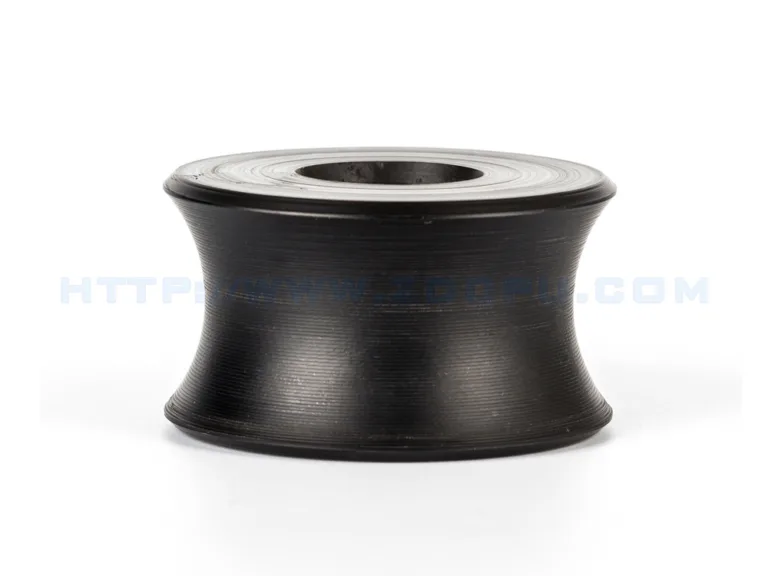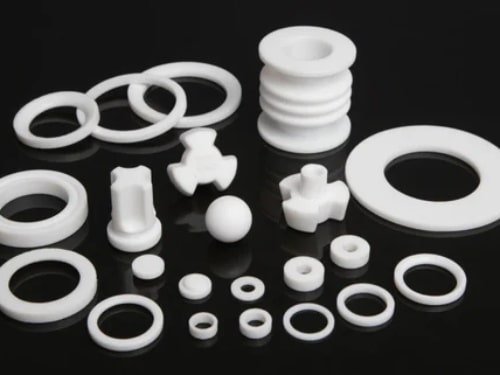Metal rivets play a vital role in structural connections, and there are many different types of rivets, each designed for a specific application. From aerospace engineering to everyday crafts, these unassuming fasteners are the secure links that hold our world together. In this guide, we’ll take an in-depth look at the mechanics, materials, and versatility of rivets, revealing their critical roles in a variety of industries and projects. Join us as we explore the world of rivets, revealing their strengths, weaknesses, and various applications.
What are Rivets?
A rivet is a fundamental mechanical fastener that plays a pivotal role in connecting two or more components together. Unlike screws or bolts that require threading, rivets are permanent fixtures, creating secure and robust joints through compression and expansion. This unique mechanism not only ensures stability but also distributes stress evenly across the connected parts, contributing to their overall strength. Rivets have been relied upon for centuries in various industries, from construction and automotive manufacturing to aerospace engineering and artistic endeavors.
How Does a River Work?
A rivet consists of a cylindrical shaft with a head on one end and a tail on the other. To create a secure joint, a rivet is inserted through aligned holes in the materials to be joined. The tail end is then deformed using specialized tools, such as rivet guns or hammers. This deformation creates a second head, known as a “shop head,” that expands and locks the rivet in place, compressing the connected materials tightly. The rivet’s ability to remain tightly in position, even under significant stress, makes it an ideal choice for applications requiring sturdy connections. By distributing the load across the connected parts, rivets contribute to the overall integrity and durability of structures and components. From bridges and buildings to aircraft and everyday appliances, the mechanics of rivets serve as the unsung heroes behind some of the strongest bonds in engineering and construction.
Different Types of Rivets and Insert Molding Service

In Zhongde insert molding, the role of rivets can be summarized as follows:
- Enhancing Strength and Stability
Rivets, as a type of insert, can be embedded into plastic or rubber during the molding process to provide additional mechanical strength to the finished product. This ensures that the insert remains firmly in place under high load or repeated use, preventing loosening or detachment. - Positioning and Alignment
Rivets can also be used for positioning, ensuring that inserts are accurately aligned during the injection molding process. The design of the rivet’s shape and location ensures that the insert remains in the correct orientation within the mold, reducing the risk of product misalignment or deformation. - Improving Wear Resistance and Longevity
Embedding rivets can enhance the wear resistance of the product, especially in areas that are subjected to frequent contact or abrasion. Rivets serve as reinforcing materials, helping to protect the plastic or rubber surface. This is particularly important in moving parts, equipment brackets, or products that require frequent disassembly. - Increasing Product Functionality
Rivets can act as functional components in insert molded products, such as providing anchor points, serving as conductive elements, or acting as connectors between other parts. The shape and position of the rivets can be designed to meet specific product requirements, enhancing the overall versatility of the product. - Aesthetic and Structural Integrity
Unlike external mechanical fasteners, rivets embedded within the molding process do not leave protrusions or welding marks on the exterior of the product, resulting in a cleaner appearance while maintaining the integrity of the internal structure. This design also contributes to the product’s sealing properties and resistance to corrosion.
Materials Used for Rivets: From Strength to Specialty
Rivets come in a range of materials carefully chosen to match specific applications. Common materials for most Different types of rivets include:
Steel
Known for its strength and durability, steel rivets are versatile and widely used in heavy-duty applications such as construction and automotive manufacturing.
Aluminum
Lightweight and corrosion-resistant, aluminum rivets find their place in aerospace, marine, and other industries where weight and longevity are critical factors.
Copper and Brass
These materials offer excellent conductivity and are often chosen for electrical connections and decorative applications.
Stainless Steel
Resistant to corrosion, stainless steel rivets are favored in environments prone to moisture exposure, such as marine and outdoor structures.
Different Types of Rivets and Use

Rivets come in a remarkable variety of Different types, each designed to suit specific applications and comines different materials effectively. Some common types of rivets include:
- Solid Rivets: The classic choice, solid rivets consist of a single piece of material and are manually installed by deforming the tail end to create a secure connection.
- Blind Rivets (Pop Rivets): These versatile rivets are ideal for situations where access to both sides of the joint is limited. They feature a mandrel that pulls the rivet body, creating a secure bond as the mandrel snaps off.
- Drive Rivets: Known for their ease of installation, drive rivets are self-piercing and require only a hammer or mallet for installation. They are used in materials like metal, plastic, and wood.
- Tubular Rivets: Comprising a hollow shaft, tubular rivets are used when joining soft materials or when a hollow joint is desired.
- Split Rivets: Featuring two legs that fold back upon installation, split rivets are used for lightweight applications like attaching tags or labels.
- Oscar Rivets: Also known as double-cap rivets, these consist of two caps attached to a single rivet post. They are used decoratively or in leatherworking.
- Shoulder Rivets: Shoulder rivets have a larger head that sits on the surface and provides a decorative appearance. They are often used in fashion and leather goods.
- Flush Rivets: Flush rivets have a flat head that sits flush with the surface, providing a smooth finish. They are commonly used in aircraft and automotive applications.
Each types of rivet head offers unique advantages and is suited to specific scenarios. The selection depends on factors such as joint type, materials, accessibility, and load-bearing requirements. Besides those types of rivets, there are also other rivets as below.
- Snap Head Rivet: Snap head rivets have a round head with a flat top and a slightly raised edge. They are often used in applications where a decorative finish is desired, and the rivet head is intended to be visible.
- Pan Head Rivet: Pan head rivets have a rounded, slightly domed head that resembles the shape of a pan. They are commonly used when a larger bearing surface is needed for better load distribution.
- Mushroom Head Rivets: Mushroom head rivets have a head that resembles a mushroom cap, with a wider top and a narrower stem. They offer a neat appearance and are often used in furniture and decorative applications.
- Flat-Head Rivet: Flat-head rivets have a flat, level head that provides a flush finish when installed. They are used in applications where the appearance of the joint is important and a smooth surface is desired.
- Conical Head Rivet: Conical head rivets have a head shaped like a cone. The tapered shape allows for easy insertion into the workpiece and offers a secure connection when the rivet is set.
- Self-Piercing Rivets: Self-piercing rivets are designed to pierce through two or more layers of material without the need for pre-drilled holes. They are commonly used in automotive and sheet metal applications.
- Friction-Lock Rivet: Friction-lock rivets have a serrated shank that creates friction when the rivet is inserted into a hole. This friction provides a more secure fit, reducing the risk of rotation or loosening.
By understanding the available types of rivets, designers and engineers can make informed choices to achieve secure and effective connections.
Application of Types Rivets
Metal rivets, with their robust design and versatility, find their place in a diverse range of applications across industries. Some notable applications include:
Aerospace
In aviation and aerospace, metal rivets play a pivotal role in constructing aircraft components. They ensure strong connections that withstand extreme conditions and stresses.
Jewelry
Delicate yet essential, metal rivets are used in jewelry-making to securely fasten various components, adding both functionality and aesthetics.
Structural Joints
From bridges and buildings to machinery and vehicles, types of metal rivets are the go-to choice for forming sturdy and reliable structural joints.
Home Construction
Rivets contribute to the construction of homes and other buildings, securing materials like metal, wood, and plastic to create durable structures.
Fashion Accessories
Rivets add a touch of durability and style to fashion accessories such as bags, belts, and footwear.
Advantages of Types Metal Rivets
Rivets offer a host of advantages that make them a popular choice for various applications. Here are some key benefits:
Simple Installation:
Rivets are straightforward to install, requiring minimal equipment and training. Their installation process doesn’t involve complex threading, making them accessible to a wide range of users.
Accessibility:
Some rivet types, such as blind rivets, can be installed from one side of the joint, making them ideal for situations with limited access to the opposite side.
Cost-Effective:
Rivets are cost-efficient fasteners compared to other methods like welding or adhesive bonding. Their simple installation reduces labor costs, making them an economical choice.
High Strength:
Rivets create robust and durable connections, distributing loads evenly across the joint. This strength is vital in applications where the integrity of the connection is critical.
Versatility:
With various types and materials available, rivets are versatile fasteners suitable for joining different materials, including metals, plastics, and wood.
Permanent Bond:
Once installed, rivets create a permanent connection that is difficult to dismantle without damaging the components, ensuring the stability of the joint.
Minimal Thermal Distortion:
Unlike welding, which involves high temperatures, riveting generates minimal thermal distortion in the materials, preserving their original properties.
Disadvantages of Types Rivets
While rivets offer numerous advantages, it’s important to also consider their limitations and potential drawbacks. Here are some key disadvantages:
Permanent Connection:
The very strength of rivets can be a disadvantage if disassembly or modification of the joint is required, as removing rivets can damage the components.
Surface Damage:
Installing rivets may require drilling holes in the materials, which can potentially weaken the structure or mar the appearance, especially with thin or delicate materials.
Access to Both Sides:
While blind rivets address this issue to some extent, certain rivet types require access to both sides of the joint for installation, which can be challenging in confined spaces.
Not Leak Proof:
Unlike certain fastening methods that can provide airtight or watertight seals, rivets might allow for the passage of liquids, gases, or particles through the joint.
Different Types of Rivets Conclusion
Rivets emerge as superior alternatives to screws, bolts, and nuts, surpassing them in efficiency and dependability. From aerospace marvels to everyday essentials, rivets have proven themselves as connectors. In the realm of connectors, rivets stand out, adapting to evolving machines and structures. With diverse types serving specific roles, the choice of appropriate metal rivets is paramount for optimal outcomes.
Zhongde is a plastic injection molding manufacturer, providing high-quality custom solutions from mold design to final production.
FAQs of Rivets
Alternatives to rivets include screws, bolts, welding, adhesives, nuts and bolts, clips and clamps, snap-fit connections, threaded inserts, latches and catches, staples and nails, and various fastening methods based on the specific application.
Generally, solid rivets and specialized high-strength blind rivets like CherryMax rivets and structural rivets are known for their strong connections. These rivets are often used in applications where high shear and tensile strength are required.




